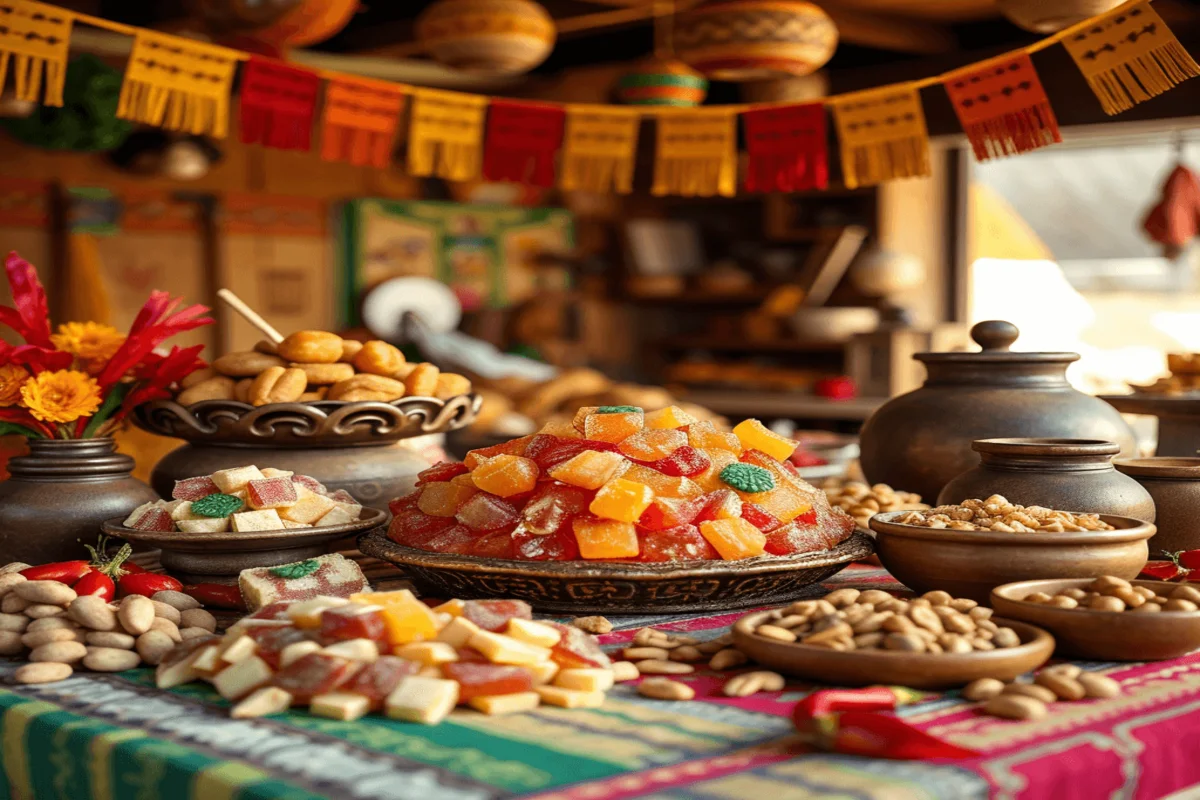Mexican candy is a vibrant expression of the country’s rich culinary heritage. Known for its unique combination of sweet, spicy, and tangy flavors, these treats are a staple in Mexican culture, enjoyed by both young and old alike. Whether it’s the crumbly sweetness of Mazapán, the tangy and spicy Dulces Enchilados, or the creamy richness of Jamoncillo de Leche, Mexican candies offer a delightful sensory experience that is deeply rooted in tradition. In this comprehensive guide, we’ll delve into the history, cultural significance, and step-by-step recipes of some of the most beloved Mexican candies.
A Brief History of Mexican Candy
Mexican Candy dates back to the pre-Columbian era when indigenous people used natural sweeteners like honey, agave syrup, and fruit to create simple confections. The arrival of the Spanish introduced new ingredients such as sugar cane, which revolutionized the art of candy-making. Over the centuries, Mexican candies evolved, incorporating a variety of flavors, textures, and regional influences.
Mazapán, for instance, has its origins in Spanish marzipan, a confection made from almonds. However, due to the abundance of peanuts in Mexico, peanuts replaced almonds, giving birth to the unique and beloved Mexican candy version of this . Similarly, the use of chili in candies, which may seem unusual to outsiders, is a reflection of Mexico’s deep-rooted love for combining sweet and spicy flavors, a tradition that dates back thousands of years.
The Cultural Significance of Mexican Candy
Mexican candy is more than just a sweet treat; it is an integral part of cultural celebrations and traditions. During Día de los Muertos (Day of the Dead), for example, sugar skulls and other candies are made to honor the deceased. These candies are often decorated with bright colors and placed on altars as offerings. Similarly, during Christmas and other festive occasions, candy-making becomes a communal activity, bringing families together to prepare traditional sweets like Jamoncillo de Leche and Alegrías (amaranth bars).
In Mexican markets, stalls overflowing with a colorful array of candies are a common sight. From tamarind-based treats to spicy lollipops, these candies reflect the country’s diverse culinary landscape. Each region in Mexico has its own specialty candies, often made with locally sourced ingredients. For example, Cajeta, a type of caramel made from goat’s milk, is a specialty of Celaya in the state of Guanajuato, while Cocadas (coconut candies) are popular along the coasts.
Recipe 1: Mazapán – The Peanutty Delight
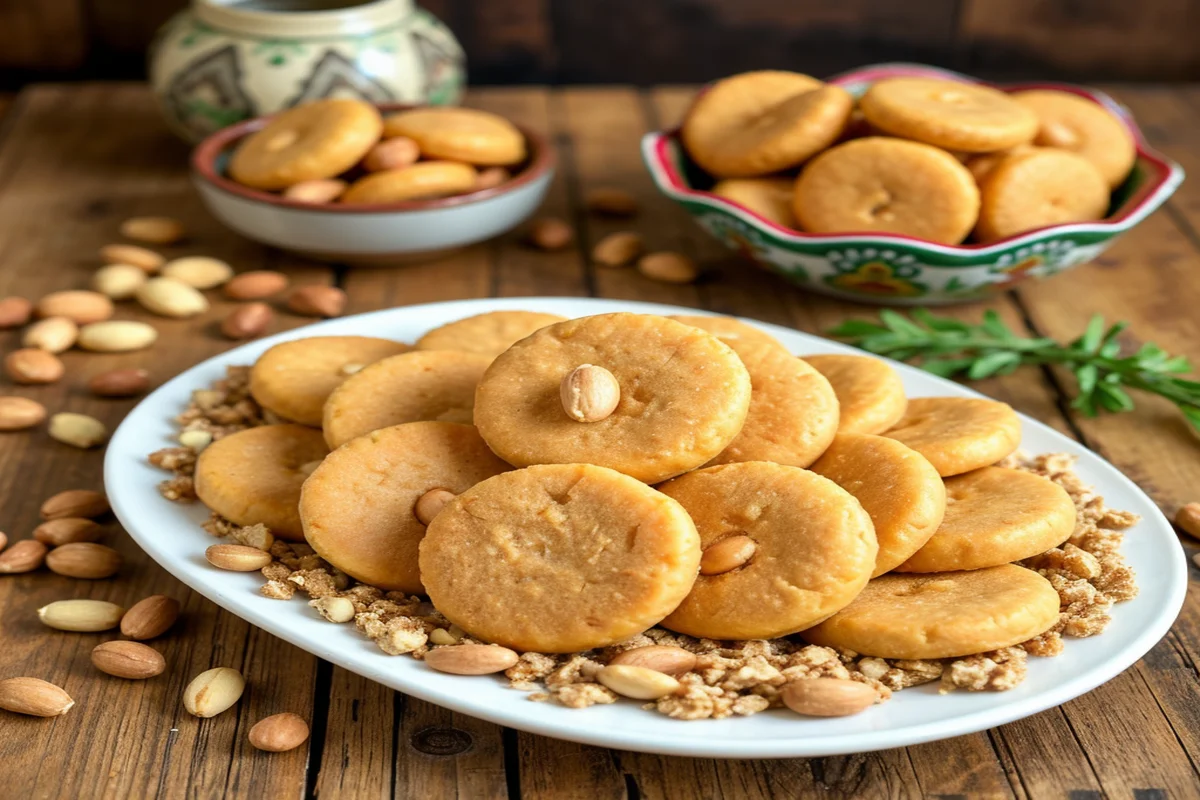
Mazapán is a simple yet incredibly satisfying candy that requires only two ingredients: roasted peanuts and powdered sugar. This treat is known for its crumbly texture and rich peanut flavor, making it a favorite among both children and adults.
Ingredients:
- 2 cups roasted, unsalted peanuts
- 1 ½ cups powdered sugar
Instructions:
- Blend the Peanuts and Sugar: Begin by adding the roasted peanuts and powdered sugar into a food processor. Pulse until the mixture becomes a fine powder. It’s important to stop blending before the mixture turns into a paste; you want a dry, crumbly texture.
- Shape the Mazapán: Place a sheet of parchment paper on a flat surface. Using a round cookie cutter (about 2 inches in diameter), scoop about 2 ½ tablespoons of the peanut mixture into the mold. Press down firmly to compact the mixture. Carefully remove the mold to reveal a perfectly shaped Mazapán.
- Serve or Store: Mazapán can be served immediately or stored in an airtight container at room temperature for up to a month. If you’re gifting the candy, wrap each piece individually in cling wrap to maintain freshness.
Tips:
- If you prefer a saltier taste, you can use salted peanuts, but be mindful that it may alter the balance of flavors.
- Ensure that the peanut mixture is not over-blended, as this will cause the oils to release, making it difficult to shape the candy (Isabel Eats).
Recipe 2: Dulces Enchilados – A Spicy-Sweet Sensation
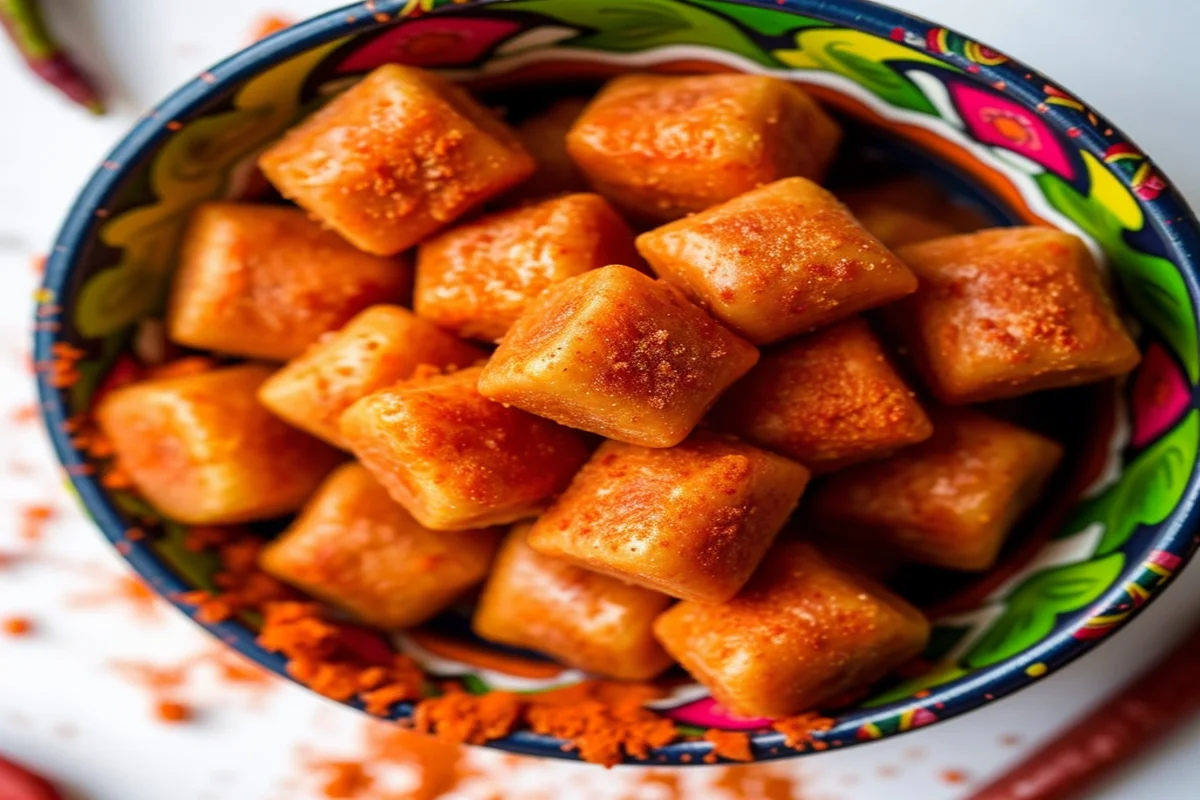
Dulces Enchilados are a modern twist on traditional Mexican candy. These treats involve coating gummy candies with a spicy mixture of Chamoy, Tajin, and powdered sugar. The result is a flavor-packed candy that is sweet, tangy, and spicy all at once.
Ingredients:
- 5 cups gummy candies (such as gummy bears, peach rings, or sour worms)
- 2 tablespoons Chamoy
- 2 tablespoons Tajin seasoning
- 1 tablespoon powdered sugar
Instructions:
- Prepare the Gummy Candies: Spread your gummy candies of choice on a baking sheet lined with parchment paper.
- Make the Spicy Coating: In a small bowl, mix together Chamoy, Tajin, and powdered sugar. Adjust the quantities according to your taste preference.
- Coat the Candies: Drizzle the Chamoy mixture over the gummy candies and toss them until they are evenly coated.
- Let Them Rest: Allow the candies to sit for a few minutes to absorb the flavors before serving.
Variations:
- For a fruitier version, you can use dried mango slices instead of gummies.
- If you prefer a more intense heat, add a pinch of extra chili powder to the mix (Three Snackateers) (Sarah Scoop EATS).
Recipe 3: Tamarindo Candy – Sweet and Tangy Delight
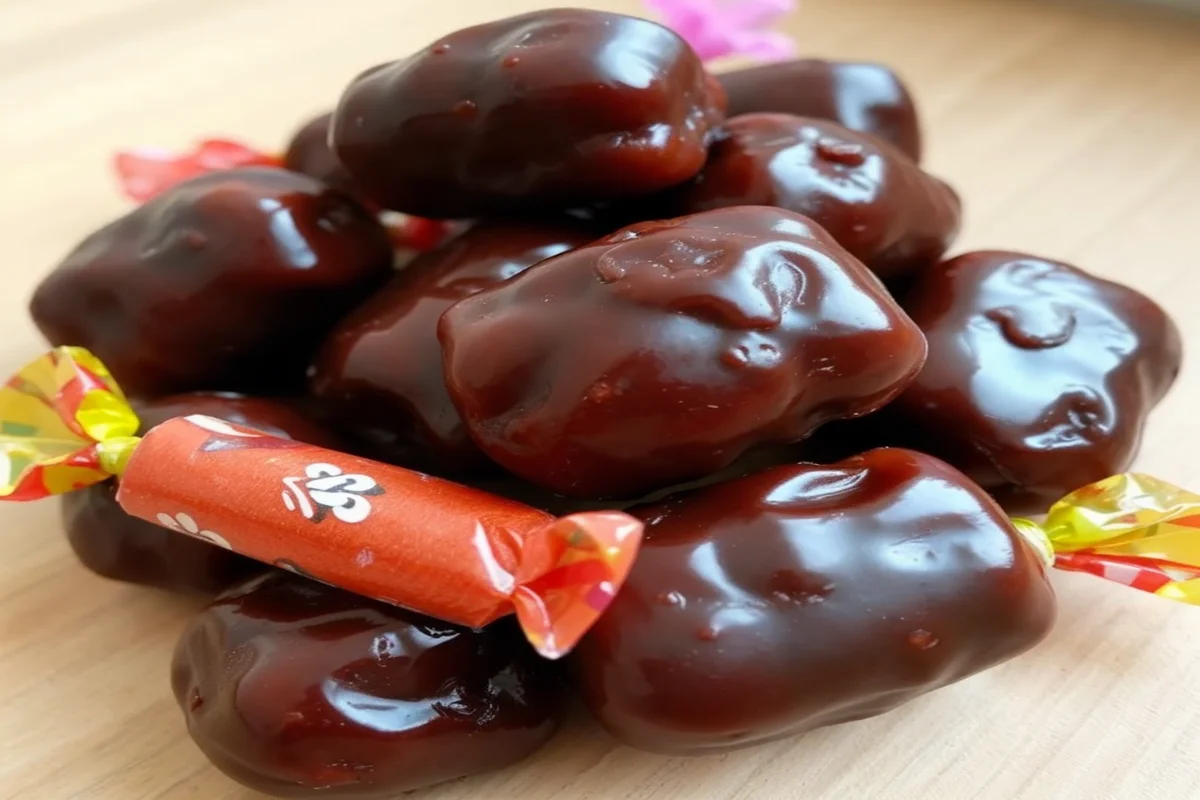
Tamarind, with its natural tartness, is a common ingredient in many Mexican candies. Tamarindo Candy combines tamarind pulp with sugar and chili powder, creating a sweet, sour, and spicy treat that is irresistible.
Ingredients:
- 1 cup tamarind pulp
- ½ cup granulated sugar
- 1 teaspoon chili powder
- 1 teaspoon lime juice (optional)
Instructions:
- Cook the Tamarind: Combine the tamarind pulp and sugar in a medium saucepan over medium heat. Stir continuously to prevent the mixture from sticking to the bottom of the pan.
- Add the Spice: Once the mixture has thickened, stir in the chili powder and lime juice. Continue cooking until the mixture reaches a thick, paste-like consistency.
- Cool and Shape: Remove the mixture from heat and allow it to cool slightly. Spread it onto a parchment-lined baking sheet and let it cool completely. Once cooled, cut the candy into small pieces.
Serving Suggestions:
- Tamarindo Candy can be served as is or sprinkled with additional chili powder for extra heat.
- For a fun variation, roll the candy into small balls and dust them with sugar (Sarah Scoop EATS).
Recipe 4: Jamoncillo de Leche – A Creamy Caramel Fudge
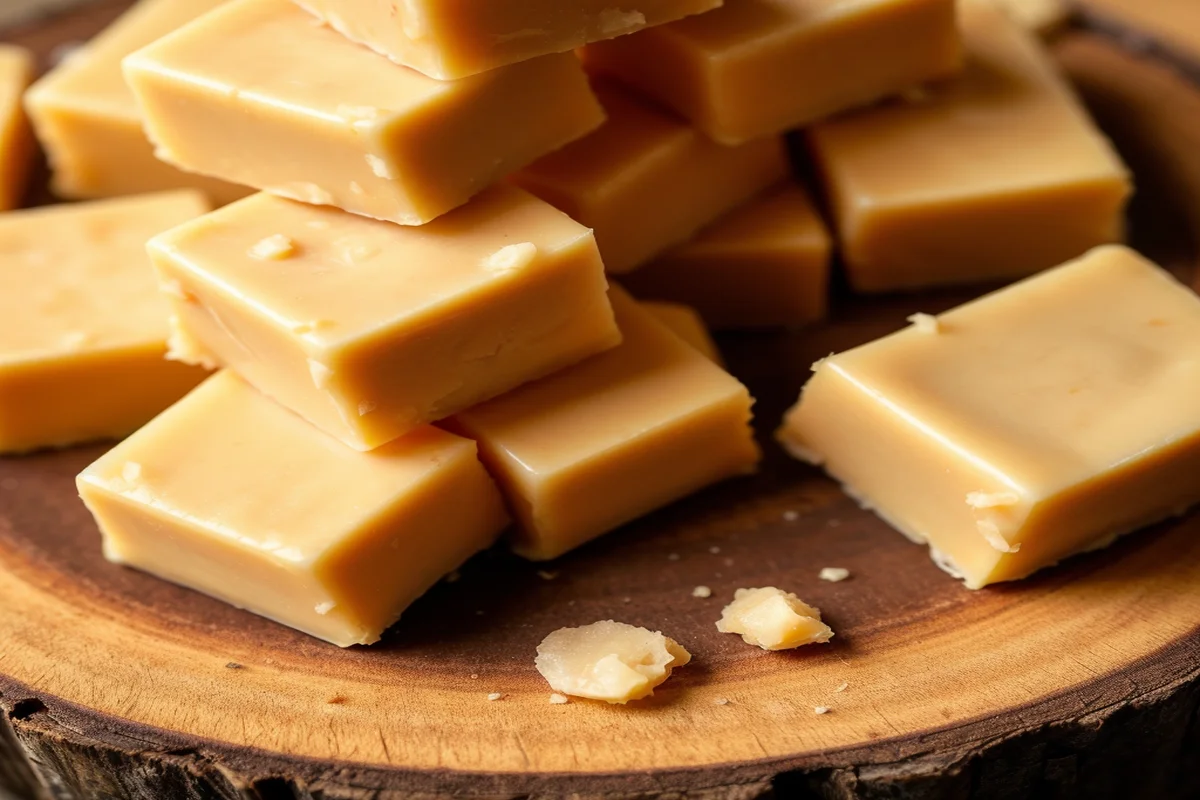
Jamoncillo de Leche is a traditional Mexican candy made from milk, sugar, and a hint of vanilla. This rich and creamy treat is similar to fudge and is often garnished with pecans for added flavor and texture.
Ingredients:
- 1 ½ cups whole milk
- 1 ½ cups granulated sugar
- ½ teaspoon baking soda
- 1 teaspoon vanilla extract
- Pecan halves or pieces for garnish
Instructions:
- Cook the Milk and Sugar: In a heavy-bottomed saucepan, combine the milk, sugar, and baking soda. Cook over medium heat, stirring constantly to dissolve the sugar and prevent the milk from scorching.
- Add Vanilla: As the mixture begins to thicken and take on a caramel color, stir in the vanilla extract. Continue cooking until the mixture is thick enough to hold its shape when dropped into cold water.
- Shape the Candy: Pour the mixture into a greased dish or mold. Alternatively, you can shape the candy into small balls with greased hands. Garnish with pecan halves or pieces before the candy sets completely.
- Cool and Serve: Allow the candy to cool at room temperature. Once set, it can be sliced into squares or served as individual balls (La Piña en la Cocina).
Recipe 5: Alegrías – The Ancient Amaranth Bar
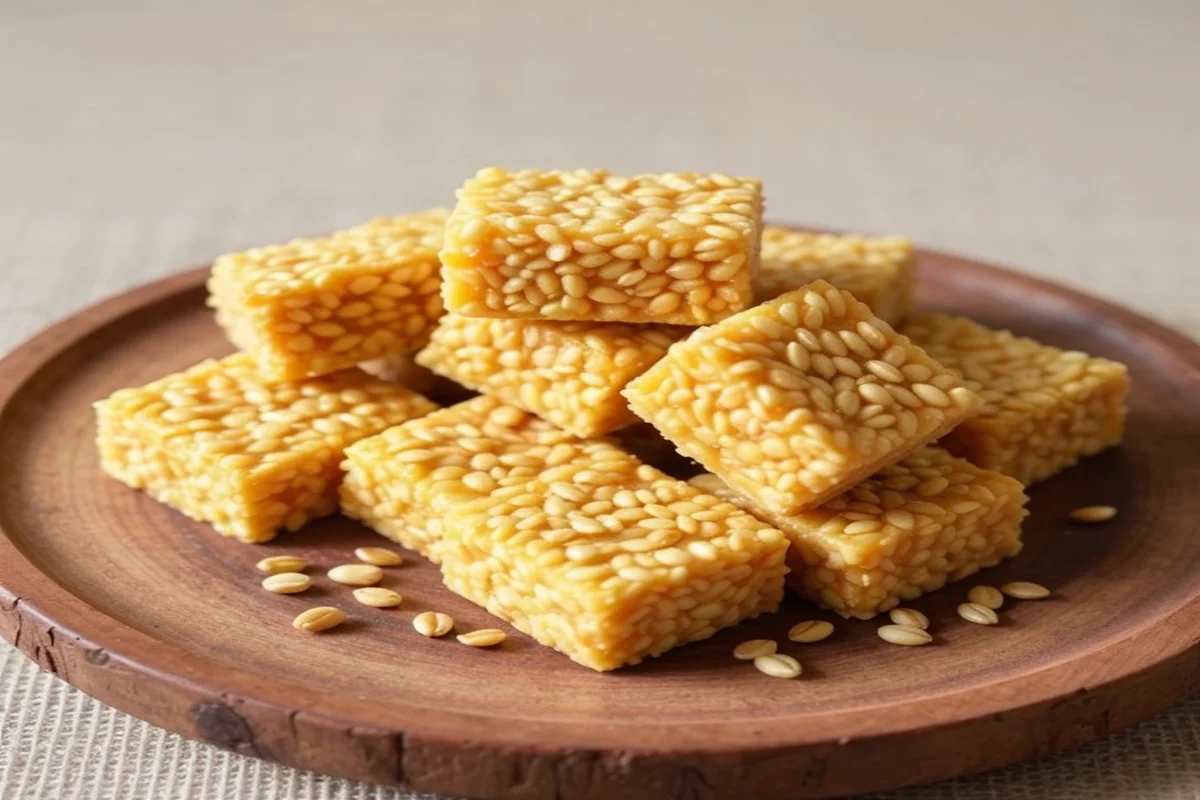
Alegrías are a traditional Mexican candy made from amaranth seeds, a highly nutritious grain that has been cultivated in Mexico for thousands of years. These bars are sweetened with honey or piloncillo (unrefined cane sugar) and often contain nuts and dried fruit.
Ingredients:
- 2 cups popped amaranth seeds
- 1 cup honey or piloncillo syrup
- ½ cup chopped nuts (such as almonds or peanuts)
- ½ cup dried fruit (such as raisins or cranberries)
Instructions:
- Pop the Amaranth: Heat a deep saucepan over medium heat. Add the amaranth seeds in small batches, covering the pan with a lid. Shake the pan frequently to ensure even popping. The seeds should pop like tiny popcorn.
- Make the Syrup: In a separate saucepan, heat the honey or piloncillo syrup until it becomes liquid and begins to bubble.
- Combine Ingredients: Mix the popped amaranth, chopped nuts, and dried fruit in a large bowl. Pour the hot syrup over the mixture and stir quickly to combine.
- Shape and Cool: Press the mixture into a greased mold or baking dish. Allow it to cool completely before cutting into bars (La Piña en la Cocina).
Frequently Asked Questions
1. What is the most popular Mexican candy?
The most popular Mexican candies include Mazapán, known for its crumbly peanut flavor, Pulparindo, a tamarind-based candy that is both sweet and spicy, and Duvalin, a creamy candy that comes in a variety of flavors like hazelnut and vanilla. These candies are staples in Mexican households and are loved for their unique and intense flavors.
2. Why is Mexican candy spicy?
Mexican candy often combines sweet and spicy flavors because of the cultural preference for this taste profile. Spices, particularly chili powder, have been integral to Mexican cuisine for centuries. Adding chili to candy enhances the flavor and provides a distinctive kick that balances the sweetness, making these treats unique.
3. Is Mexican candy bad for you?
Mexican candy, like many other sweets, contains sugar, which should be consumed in moderation. Some candies also include chili powder and other spices that may not be suitable for everyone, especially those sensitive to spicy foods. However, many Mexican candies are made with natural ingredients like tamarind and peanuts, which can offer nutritional benefits.
4. How long does homemade Mexican candy last?
The shelf life of homemade Mexican candy varies depending on the type. Mazapán can last up to a month if stored in an airtight container at room temperature. Jamoncillo de Leche should be consumed within a week, while candies like Alegrías can last several weeks if kept in a cool, dry place.
5. What is Tajin, and why is it used in Mexican candy?
Tajin is a popular Mexican seasoning made from ground chili peppers, lime, and salt. It is often used in Mexican candy to add a tangy and spicy flavor. Tajin enhances the taste of fruits and candies by providing a balance of heat and acidity, which is a hallmark of Mexican sweet treats.
Mexican candy is a reflection of the country’s rich culinary history and its love for bold, contrasting flavors. Whether it’s the creamy indulgence
If you enjoyed this article, save it for later on Pinterest, Instagram and Facebook. Also join our Facebook Group for more snack fun!

